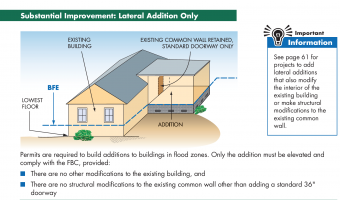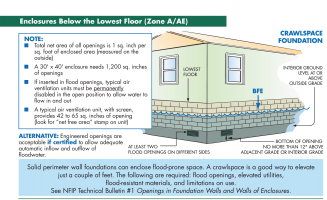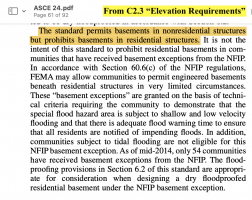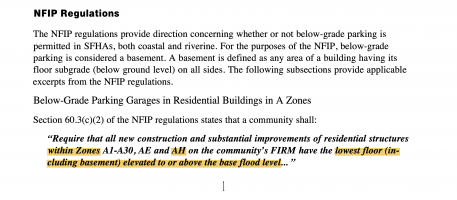jar546
Forum Coordinator
FEMA (Federal Emergency Management Agency) defines the "lowest floor" in the context of flood insurance and flood zone regulations. The lowest floor is essentially the lowest enclosed area in a building, with some exceptions. Here's what you need to know:
- Definition of Lowest Floor: The lowest floor refers to the bottom level of the building that is fully enclosed, except for areas specifically designed for vehicle parking, building access, or storage.
- Prohibited Uses: If the lowest enclosed area is used for anything other than vehicle parking, building access, or storage, it is still considered the lowest floor. Using this area for other purposes violates the requirements set by the National Flood Insurance Program (NFIP). This violation can result in significantly higher flood insurance premiums.
- Below-BFE Finished Areas: Any finished areas below the Base Flood Elevation (BFE), including foyers, are not compliant with NFIP requirements. These areas may suffer flood damage that is not covered by insurance, and the building may face increased flood insurance costs.
- Basements: In the case of basements (defined as areas below grade on all sides), regardless of how they are used, the floor of the basement is always considered the lowest floor. However, it's important to note that constructing basements in V Zones and A Zones is generally prohibited unless the basement is elevated to or above the flood elevation, or a specific exception has been granted.
- Special Requirements for Enclosed Areas Below BFE: In coastal areas, walls of enclosed areas below the BFE must meet special requirements. These requirements are outlined in FEMA Fact Sheet No. 8.1, which covers enclosures and breakaway walls, as well as in Technical Bulletins (TB) 5 and 9 from 2008.
- Avoiding Basements in Coastal A Zones: It's emphasized that constructing basements in Coastal A Zones is generally not recommended due to the associated flood risks.




